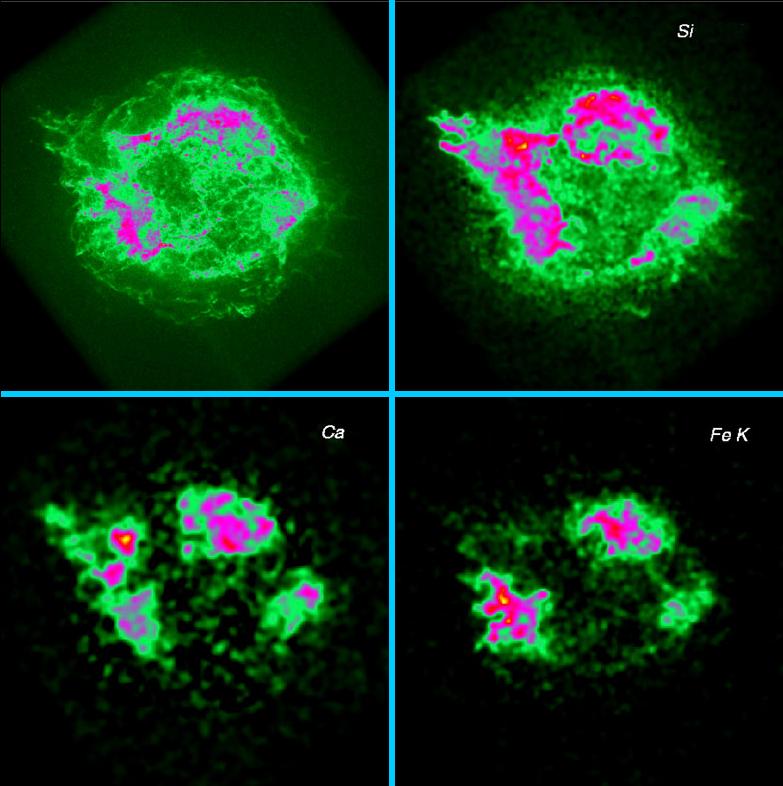
 Credit: NASA/GSFC U. Hwang et al./CXC
Credit: NASA/GSFC U. Hwang et al./CXC
Chemical Segregation in Cas A
Chemical elements heavier than helium are thought to be produced in the
cores of massive stars. These elements are distributed to the Galaxy when
these stars explode as supernovae. The Chandra X-ray telescope is now giving
us, for the first time, a detailed view of how this distribution process
works. The image above is a deep image of the supernova remnant Cassiopeia
A (or Cas A for short), obtained with Chandra's ACIS
camera. The ACIS camera allows astronomers to measure the characteristic
X-ray emission generated by particular chemical elements, like silicon,
calcium and iron. The image at the top left shows the integrated
(broad-band) X-ray image; the top right image shows the emission generated
by silicon atoms; the bottom left image shows the emission generated by
calcium atoms; and the bottom right image shows the X-ray emission
generated by Fe atoms. In these images, the colors represent intensity of X
rays, with yellow the most intense, then red, purple, and green. These
images support the suggestion that the layers of the star were overturned
either before or during the supernova explosion.
Last Week *
HEA Dictionary * Archive
* Search HEAPOW
* Education
Each week the HEASARC
brings you new, exciting and beautiful images from X-ray and Gamma ray
astronomy. Check back each week and be sure to check out the HEAPOW archive!
Page Author: Dr. Michael F.
Corcoran
Last modified June 28, 2000


